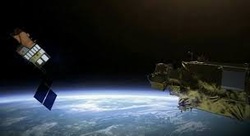 Experts say the amount of space junk is getting out of hand and America should make an effort to control the orbiting debris.
According to the chief of US Strategic Command, the United States needs better equipment to monitor the orbiting space debris and plans to avoid satellite collisions.
"We are decades behind where we should be, in my view," said Air Force General Kevin P. Chilton.
In Chilton’s speech at Offutt Air Force Base, Nebraska, he called for additional equipment, sensors and personnel to study and fight the threat.
To date, there are over 800 satellites and over 20,000 pieces of space junk orbiting the Earth. The orbiting space debris consists of parts from spent rockets and dead satellites, and items that slipped away from astronauts during spacewalks.
The problem on space junk is possible to deteriorate as more satellites are launched into orbit.
"Space situational awareness is no different than the situational awareness that we demand in any other domain," said Chilton. "And we do not provide that in an adequate fashion to my component commander in charge of space operations for the United States of America."
NASA announced that astronauts on the International Space Station (ISS) might board the Russian Soyuz spacecraft on Friday night as a safety measure in case they need to evacuate the orbiting outpost due to a possible space junk impact.
 Surgeons are considering state-of-the-art robotic equipment to operate patients with prostate cancer. However, medical authorities are bothered about the lax standards and inadequate training of practitioners.
Doctors prefer to use the da Vinci Surgical System instead of the traditional surgery in removing the prostate gland because it offers greater precision. In the United States, there were around 80,000 robotic prostatectomy procedures performed last year.
The robotic arms of the device are equipped with instruments and a camera. The tiny instruments are inserted through small incisions and are operated under the surgeon’s control. The entire procedure can also be viewed in a 3D screen.
The failure rate for such a surgery is comparable to that of a conventional surgery. However, patients are more at risk if the robots are used by inexperienced doctors.
“The more you do, the better you're going to get. The question is at what point are you doing safe surgery”, said Kevin Zorn, MD (Chief of Urology – Weiss Memorial Hospital).
He strongly believes that there is a need to have a machine to evaluate the competency of surgeons because they do not have the chance to practise on simulators before performing the robotic operation on live patients.
Doctor Zorn recounted one case where in a surgeon was using the robot for the fourth time. He performed the surgery for eight hours and his proctor, an experienced surgeon, told him that the progress of the operation was too slow.
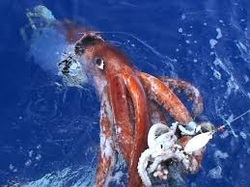 According to the Interior Department, a team of American scientists in the Gulf of Mexico netted a 5.9-metre giant squid off Louisiana’s coast.
The 46.7-kilogram giant squid was caught in a trawl net from a research vessel on 30 July.
The giant squid did not survive when brought to the surface due to the rapid change in water depth. The squid was preserved and its remains were sent to the Smithsonian Institution's National Museum of Natural History for further analysis.
The team aboard the research vessel included scientists from the National Oceanic and Atmospheric Administration (NOAA) and the Interior Department's Minerals Management Service.
"As the trawl net rose out of the water, I could see that we had something big in there...really big," said Anthony Martinez, the chief scientist on the research vessel and NOAA’s marine mammal scientist.
The research team was aware of the presence of the giant squid because its remnants had been found in its predators’ stomachs in the waters of the Caribbean, Florida Keys and Gulf of Mexico.
Since the species is difficulty to catch, the researchers’ discovery opens the opportunity to learn more about them.
According to Director Michael Vecchione of NOAA's Fisheries Service's National Systematics Laboratory, the giant squid’s discovery was an important addition to the global study of squids.
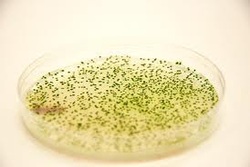 Scientists at the UCLA Henry Samueli School of Engineering and Applied Science genetically altered a cyanobacterium to utilise carbon dioxide and generate isobutanol, a liquid fuel that may potentially be an alternative for gasoline. The reaction is directly powered by sunlight, by means of photosynthesis.
According to the researchers, this new technique holds two advantages for the achievement of a greener and cleaner energy economy. First, it makes use of carbon dioxide, thus reducing emissions of greenhouse gases caused by fossil fuel burning. Second, it utilises solar energy to change carbon dioxide into isobutanol that may be used in automobiles.
As other gasoline alternatives consist of developing biofuels from algae or plants, these processes need a number of intermediate measures before its refinement into efficient fuels.
“This new approach avoids the need for biomass deconstruction, either in the case of cellulosic biomass or algal biomass, which is a major economic barrier for biofuel production”, stated study head James C. Liao, the associate director of the UCLA-Department of Energy Institute for Genomics and Proteomics. “Therefore, this is potentially much more efficient and less expensive than the current approach”.
With the use of the cyanobacterium Synechoccus elongatus, scientists first genetically raised the amount of RuBisCO, a carbon dioxide-fixing enzyme. To create a strain that utilises sunlight and carbon dioxide for the production of isobutyraldehyde gas, they then spliced genes generated from other bacteria. The high vapour pressure and low boiling point of the gas allows it to be stripped easily from the system.
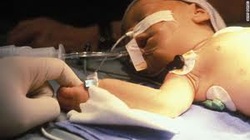 Research studies at the Wake Forest University School of Medicine have revealed that stopping the NMDA receptor of young rats causes great damage to the brain and disrupts the hearing function as the rats mature.
The NMDA (N-methyl-D-aspartate) receptor is triggered when brain cells release a chemical called glutamate. This leads to the entry of calcium into the brain, which can later have a great effect on its important functions. As the receptor is blocked, the entry of calcium is then prevented, leading to the deterioration of certain brain functions.
In medicine, some anaesthetics used for medical procedures in humans work by blocking the NMDA receptor; thus, raising speculations as to the side effects of these drugs when induced in children.
"While research in animals does not always apply to humans, our work with rats supports clinical studies by other groups that suggest learning deficits may occur in young children who have been exposed to general anaesthesia”, stated Christopher P. Turner, Ph.D., an Anatomy and Neurobiology assistant professor.
"Over the past decade, we've identified and defined the injuries taking place in young rodent brains, understood the molecular changes that are occurring because of those injuries, and now we understand how those injuries may influence the behaviour of laboratory animals that have been exposed to drugs that block the NMDA receptor”, he added.
They have considered the possible effects of anaesthetics in children after observing that MK801, which functions the same way as anaesthetics, can cause rapid brain injury on immature rodents.
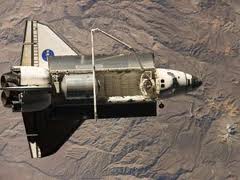 Because of the bad weather condition, NASA postponed its plan of landing the shuttle Discovery until Friday at the landing site in Florida, officials said last Thursday.
NASA commentator, Rob Navias said, “Mother Nature had the upper hand today.”
The Discovery’s flight directors attempted twice to bring the shuttle back home from the 13-day mission of re-supplying the International Space Station, but they were deterred by brisk winds and rain showers at the Kennedy Space Center.
As a result, NASA rescheduled the shuttle’s landing to Friday at 2148 GMT (5:48 P.M. EDT), and with plans of back-up landing at 2323 GMT (7:23 P.M.). In addition, NASA will open its back-up landing area located at California’s Edwards Air Force Base.
In the meantime, the shuttle’s crew had to change the Discovery’s orbit earlier on Thursday to steer away from orbital space debris.
It is still unknown to NASA what the space fragments were, but they claimed that it likely came from the space station or the shuttle itself on Saturday when the Discovery’s crew made their last three spacewalks.
Pat Ryan, NASA’s spokesman, said, “Exactly what (the debris) is not known, but it's been moving toward the orbiter so it is a concern.”
In addition, during the nine-day stay of the Discovery at the space station, two other orbital space debris were discovered that made engineers scramble to prepare for avoidance manoeuvres, but such actions were later determined to be unnecessary.
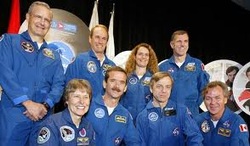 After successfully landing at the Edwards Air Force Base in California, the crew of the space shuttle Discovery prepared to return to Texas to meet with the NASA managers and their families.
Due to bad weather conditions in Florida, the space shuttle took a cross-country detour to California’s Mojave Desert.
The crew is expected to attend a welcome ceremony at the Ellington Field in Houston, Texas.
The space shuttle streaked through the Mojave Desert sky, gliding smoothly then halting successfully at the Edwards Air Force Base’s paved runway.
The Discovery returned from a 5.7 million-mile, 14-day mission to the International Space Station.
Upon landing, six of the crew members emerged from the shuttle to inspect the Discovery’s underside, which is customary.
Rick Sturckow, the flight commander, said that Discovery performed well in the mission.
“We're very happy to be back on land here in California. We wished we could have gone to Florida today ... but it just didn't work out with the weather”, Sturckow said.
One of the seven astronauts, Timothy Kopra, did not face the media after the landing because he was undergoing a series of tests, Sturckow added.
During the mission, the crew performed three space walks. They also resupplied the International Space Station with 18,000 pounds of equipment, including the $5 million treadmill named after Comedy Central’s Stephen Colbert.
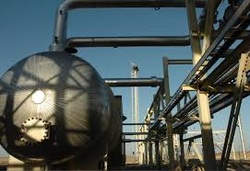 A budget of $778.8 million has been allocated for a second project to capture the carbon emissions in the western regions of Canada – the area where its oil sands are found. This was announced Wednesday by the Canadian government as well as by the government of Alberta province.
According to officials, the money, which is derived from the stimulus package of the country, will be used to upgrade the coal-fired Keephills 3 power plant of TransAlta, located near Edmonton, Alberta, and likewise, lessen its carbon emissions.
They say that they will capture an approximate one million tonnes of carbon emissions, which are to be kept in 2.8-kilometre-deep wells beneath the surface, close to the plant.
Last week Canada declared its intent to allocate 821 million US dollars in order to capture the carbon emissions of its immense oil sands – which environmentalists have denounced as extremely polluting.
The money is to be spent over a span of 15 years on the Shell Quest project – a joint venture by Marathon Oil Sands, Chevron Canada Limited, and Shell Canada – which aims to integrate the technology of carbon capture at an upgrader close to Edmonton.
Officials said that they expect the application to capture greenhouse gas emissions that will reach about 1.1 mega tonnes annually – a reduction of approximately 40 per cent.
Alberta’s oil lands rank second among the world’s largest oil reserves, next to Saudi Arabia. Except for local oil companies, the oil reserves have been neglected for years due to expensive extraction costs.
 Southern California’s kelp forests are considered one of the most productive and diverse ecosystems in the world. However, a new study shows that current kelp beds have extensively lessened compared over the years.
A research conducted by Rick Grosberg, a professor at the Center for Population and Biology and the Department of Evolution and Ecology in UC Davis, with Brian Kinlan, from UC Santa Barbara, and Michael Graham, from the Moss Landing Marine Laboratory, found that kelp forests flourished since the glaciation era from 20,000 to 7,500 years ago, then declined by about 70%.
Kelp forests surrounding offshore islands increased 13,500 years ago as the rise of sea levels shaped new habitats for their growth. However, these forests showed rapid decline over the previous years.
This shift, from an island-based system to a mainland-dominated one, coincided with some events accounted in archaeological records, implying that climate-triggered shifts of kelp ecosystems affected human populations that were dependent on these sources.
“Kelp is interesting because it disperses only over short distances”, Grosberg said. “Populations can become genetically isolated from one another even if they are quite close together”.
“We wanted to know how connected the coastal kelp populations were since the last glacial maximum”, he explained.
Scientists utilised depth charts of southern California’s shoreline and some sediment core information on previous nutrient availability to reconstruct possible kelp habitats as sea levels altered over the last 20,000 years.
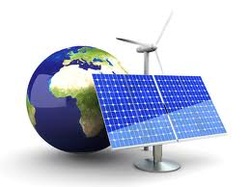 California lawmakers decided to approve legislations about establishing the nation’s most challenging renewable energy sources, although some of them have warned that such rules could hurt California’s economy and increase energy costs.
The Senate and Assembly started to vote on two associate bills, which would require some utilities to have at least one-third of their power sources from renewable energy.
Through a simple vote in the Senate’s regular legislative session, one of the bills cleared its initial hurdle.
Governor Arnold Schwarzenegger of California agreed to raise the state’s renewable standards for up to 33%, and bring in more energy sources through geothermal, wind and solar means. However, the governor still has to take a stand on the bills.
Most of the Republicans opposed the legislation. They also objected to a provision that would prohibit California from buying power utilities from other alternative sources outside the state. They also said that it could increase costs for consumers and utilities.
“I don't want to see that we craft a policy that hurts California. These measures could potentially make California the greenest Third World economy in the world”, said R-Palm Desert Senator John Benoit to his colleagues.
In the meantime, the two bills which were drafted by Assemblyman Paul Krekorian and Senator Joe Simitian, would allow utilities’ importation of renewable energy outside California provided that the power source would come from a plant connected to the state’s electricity line.
|










 RSS Feed
RSS Feed